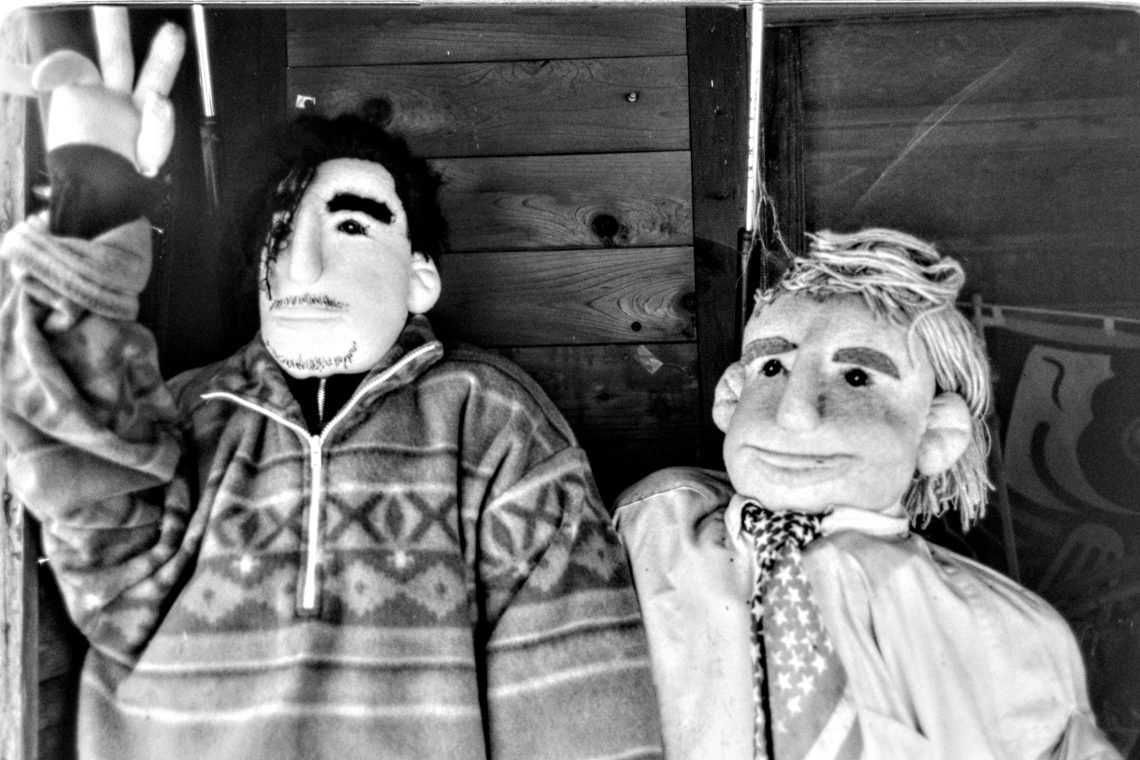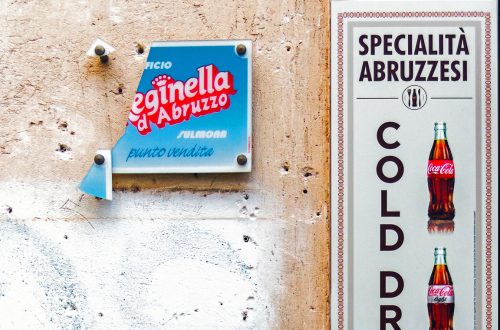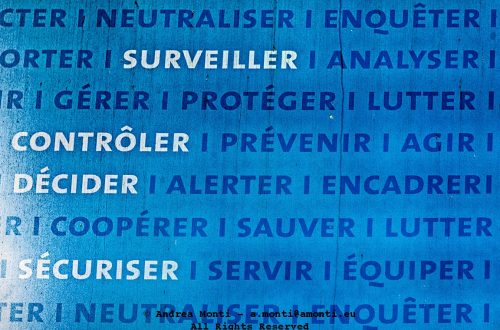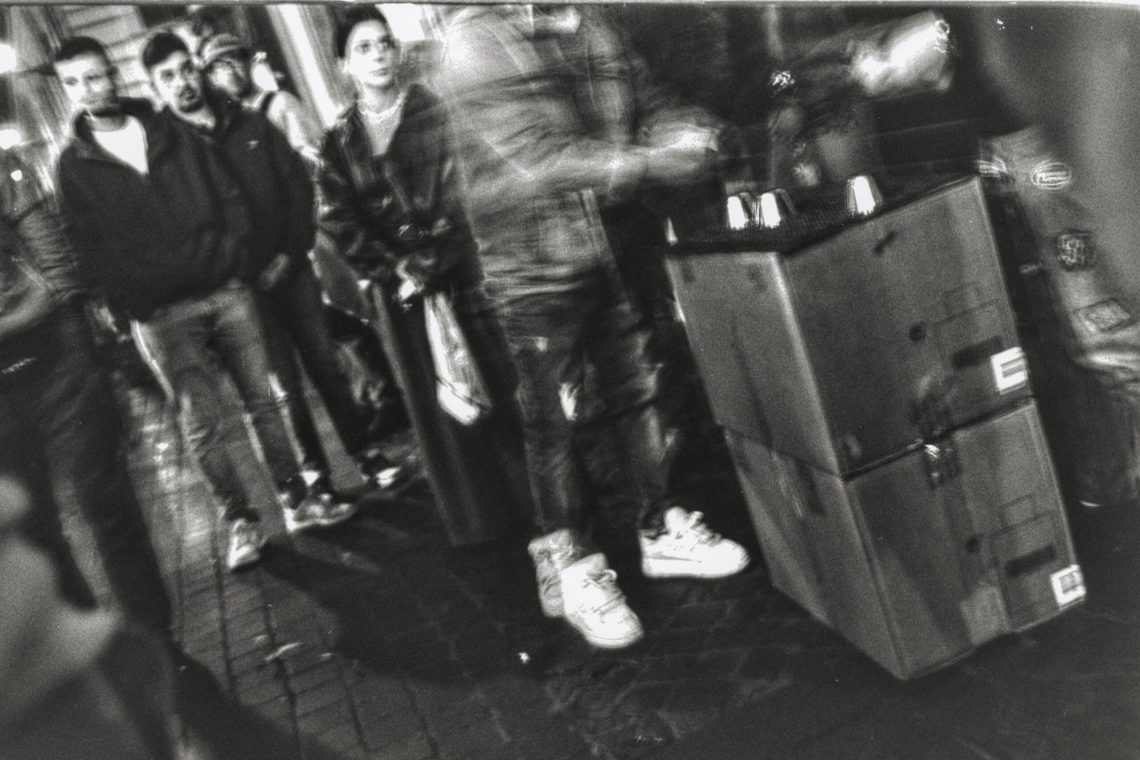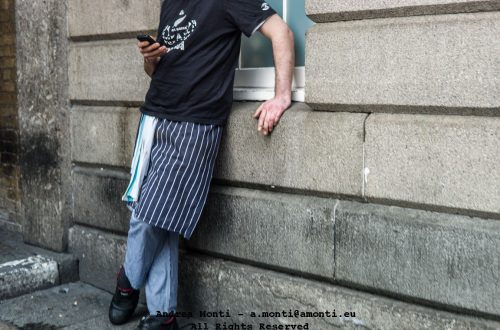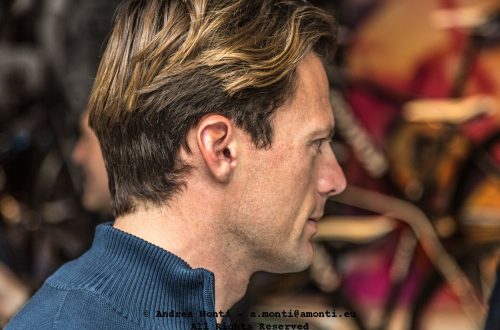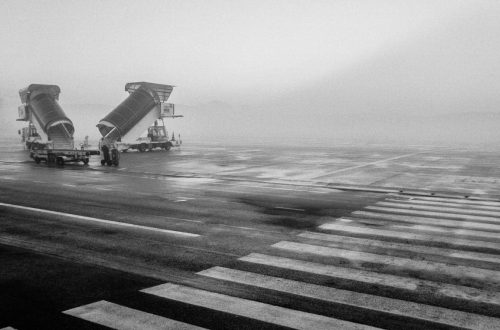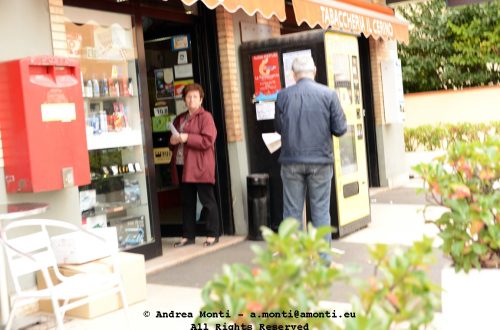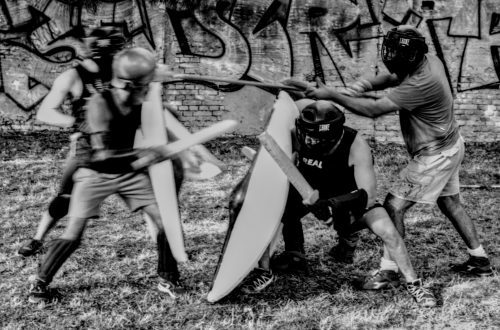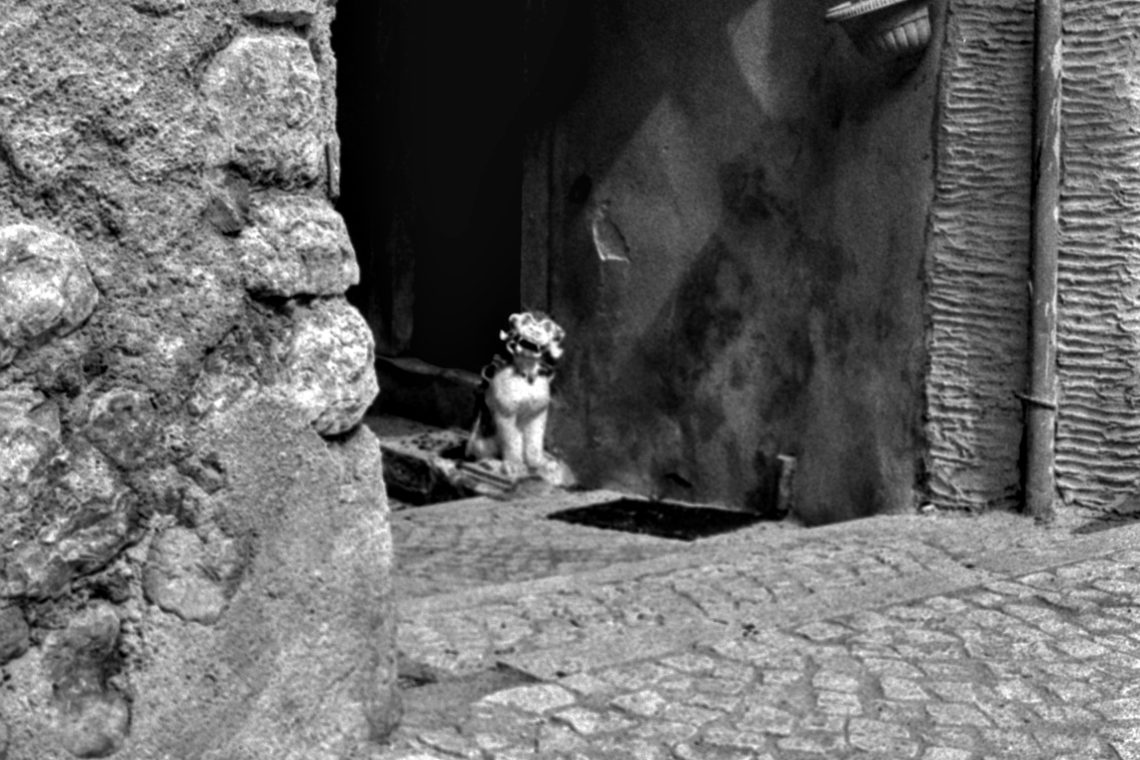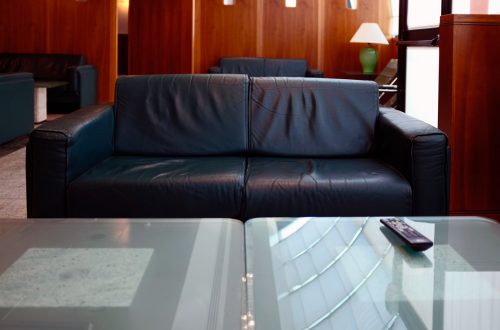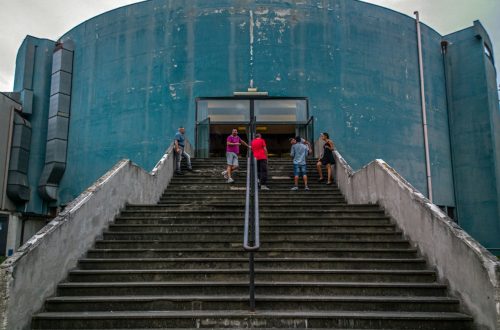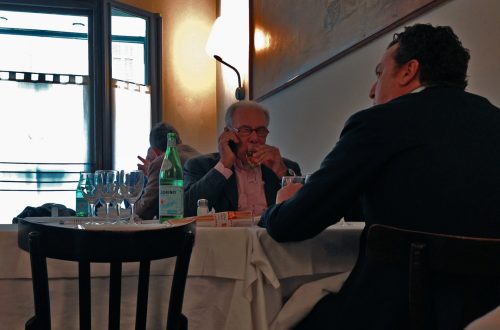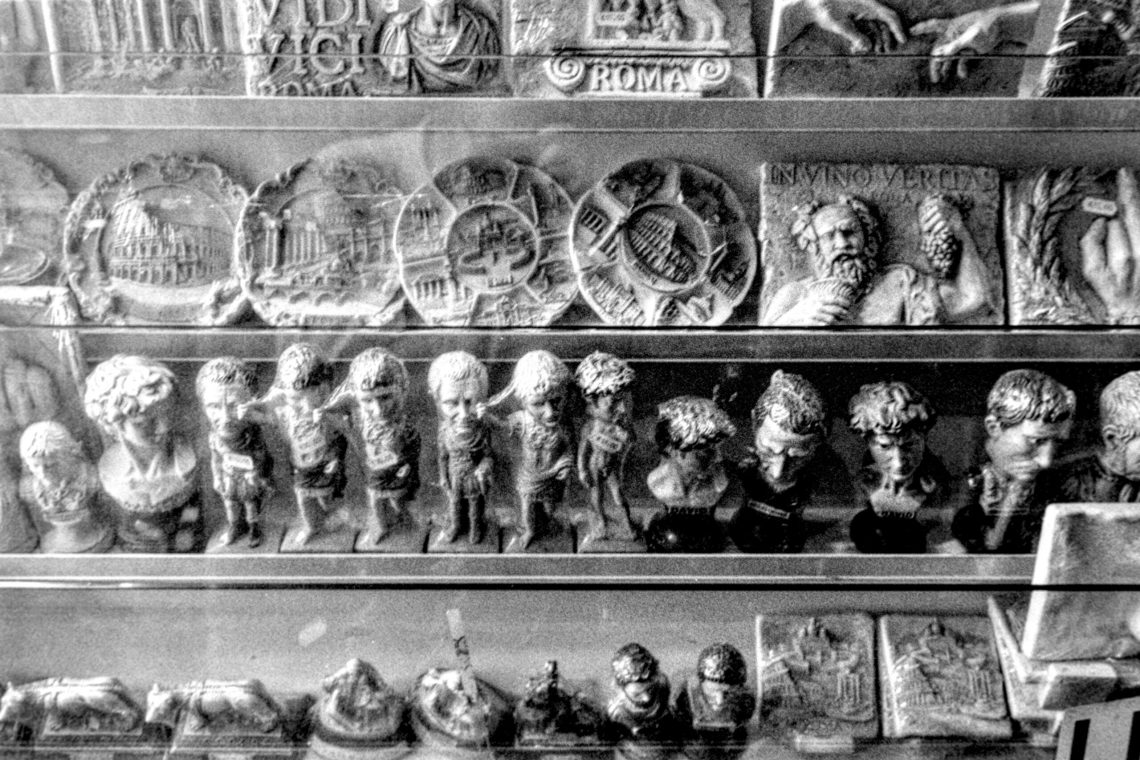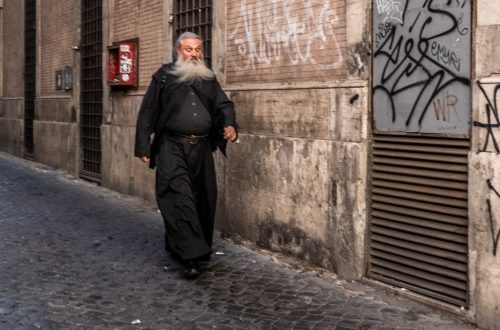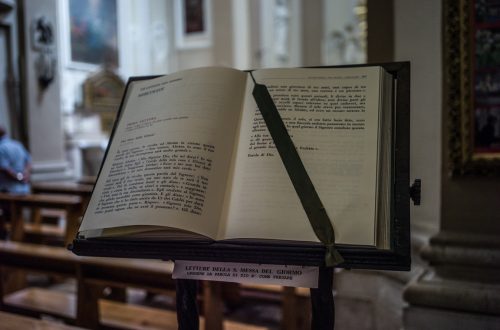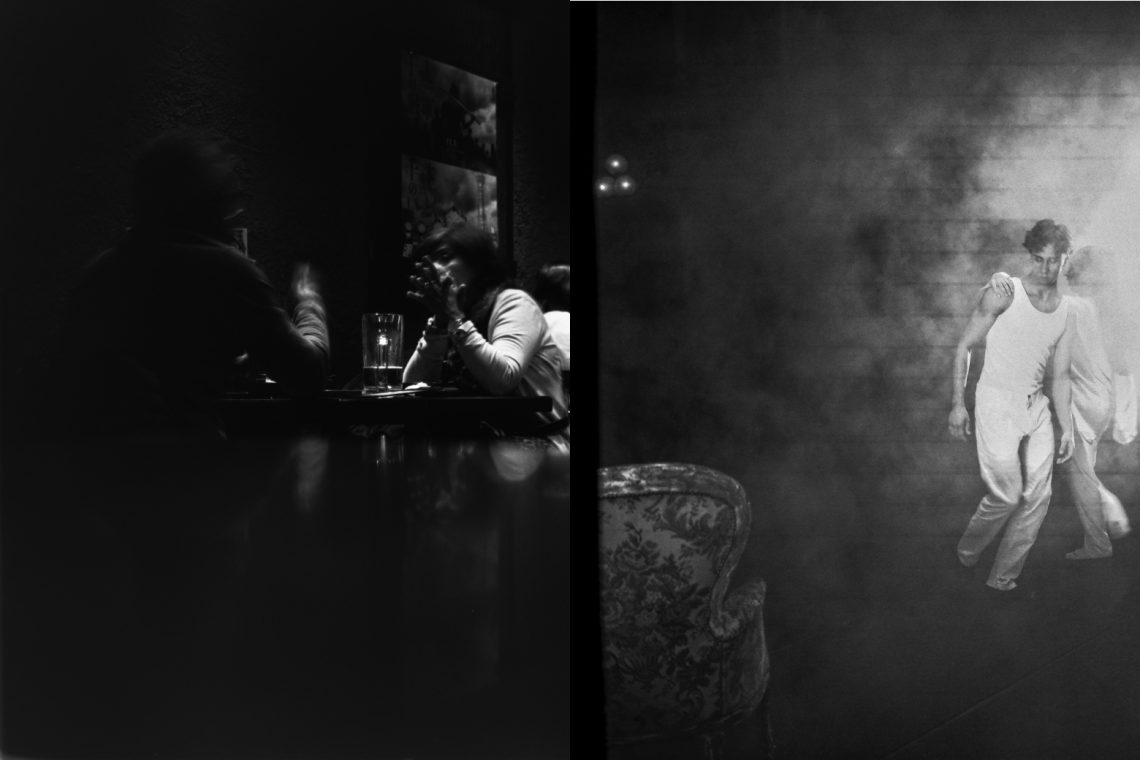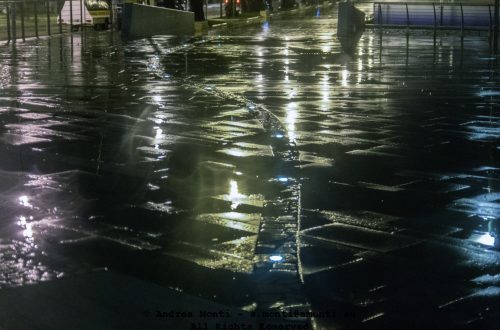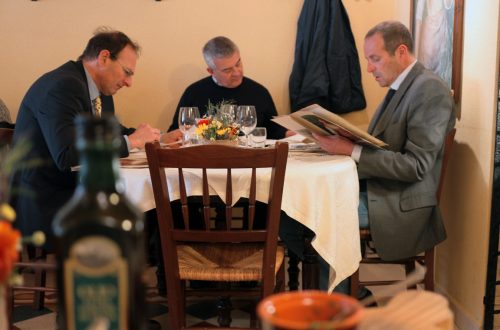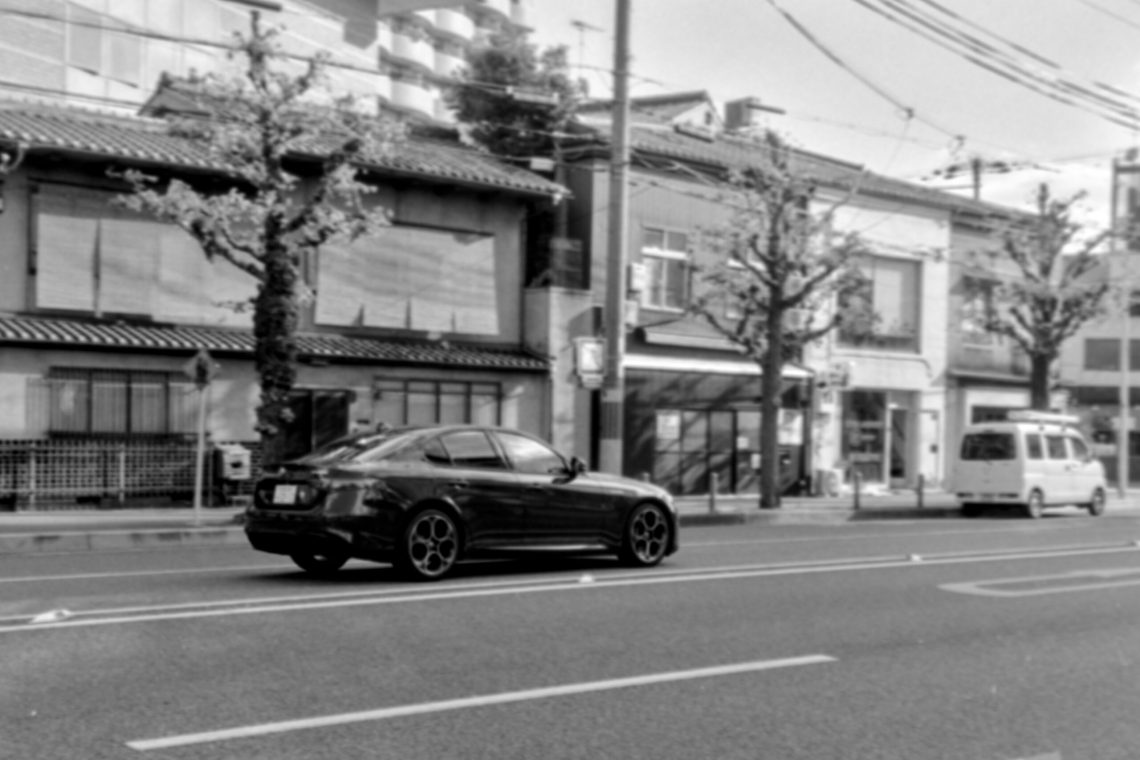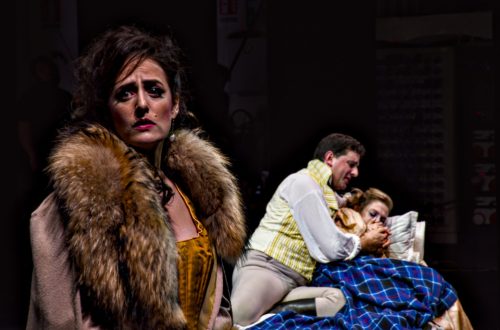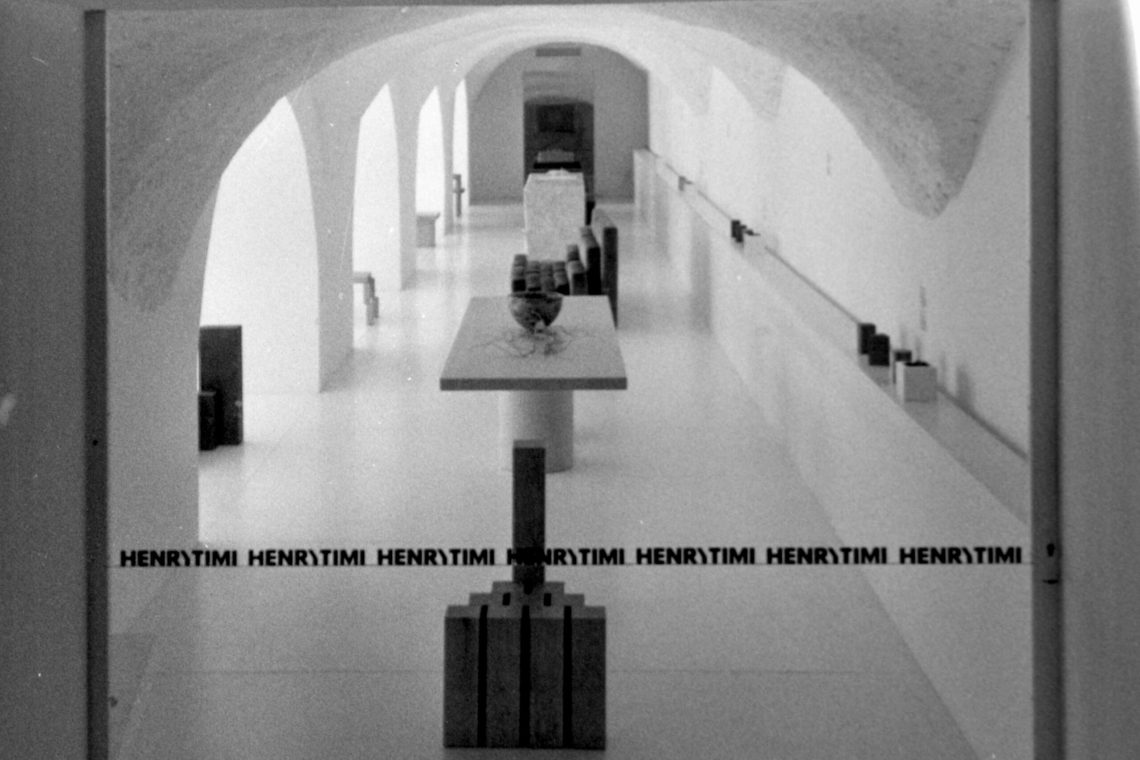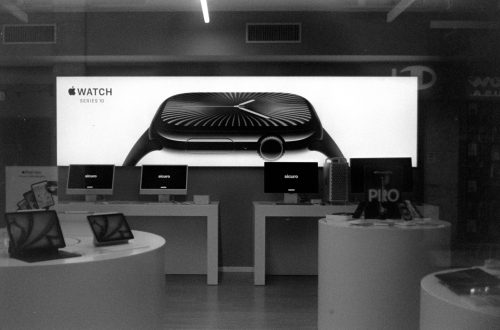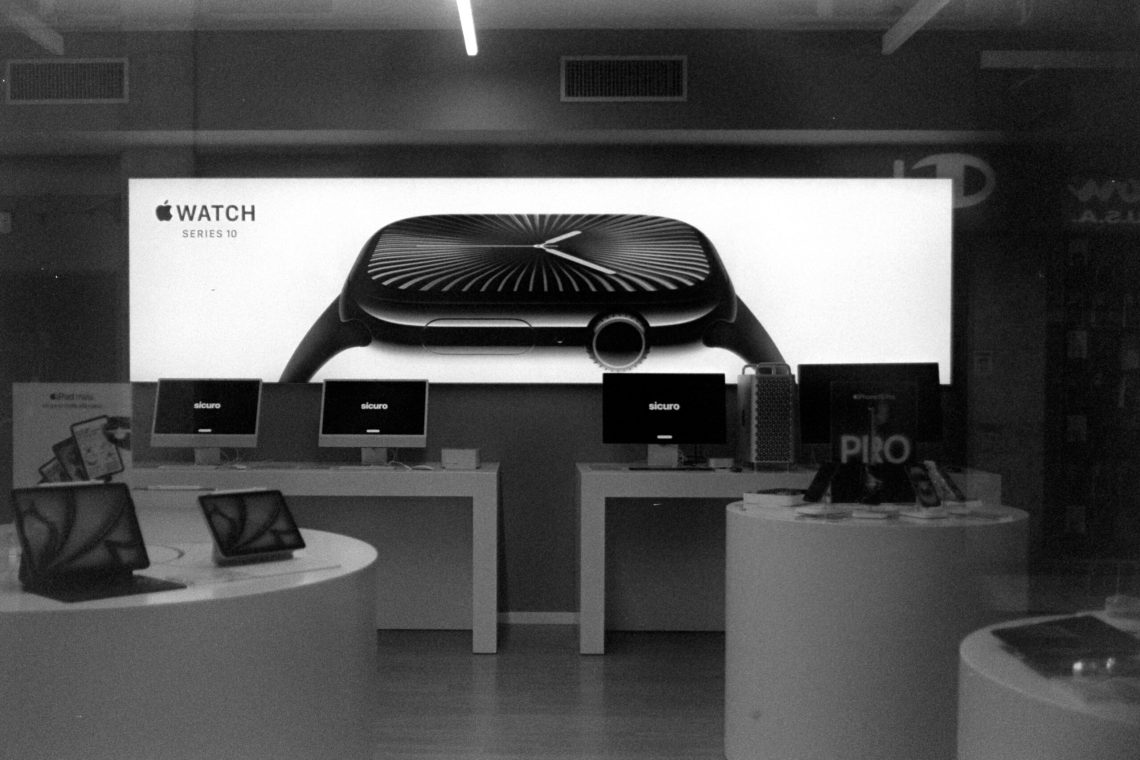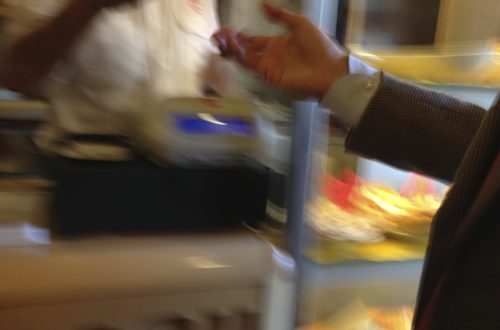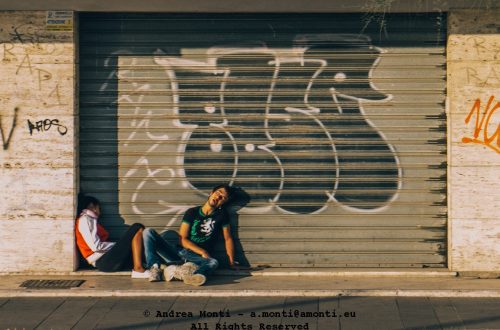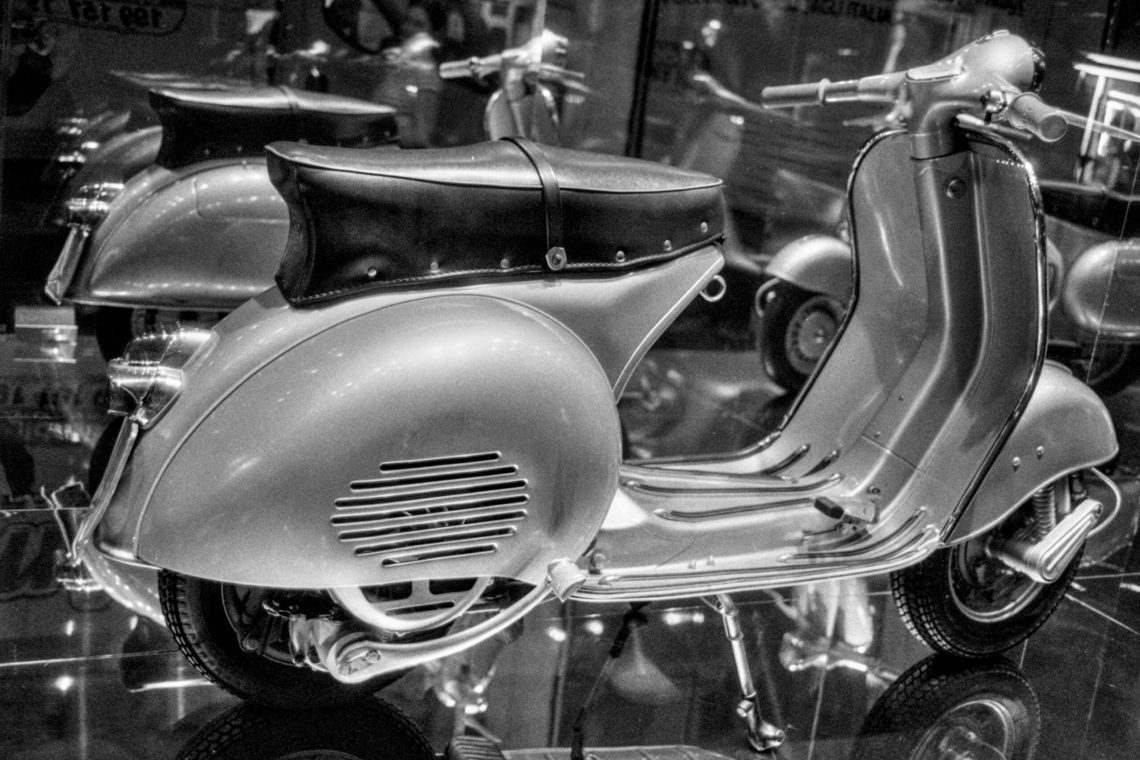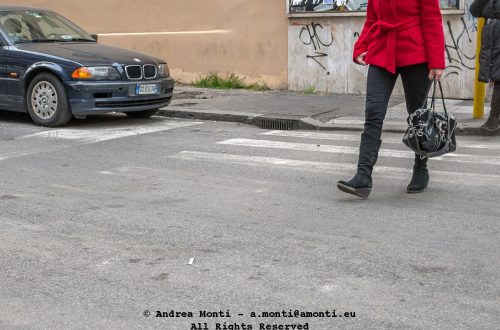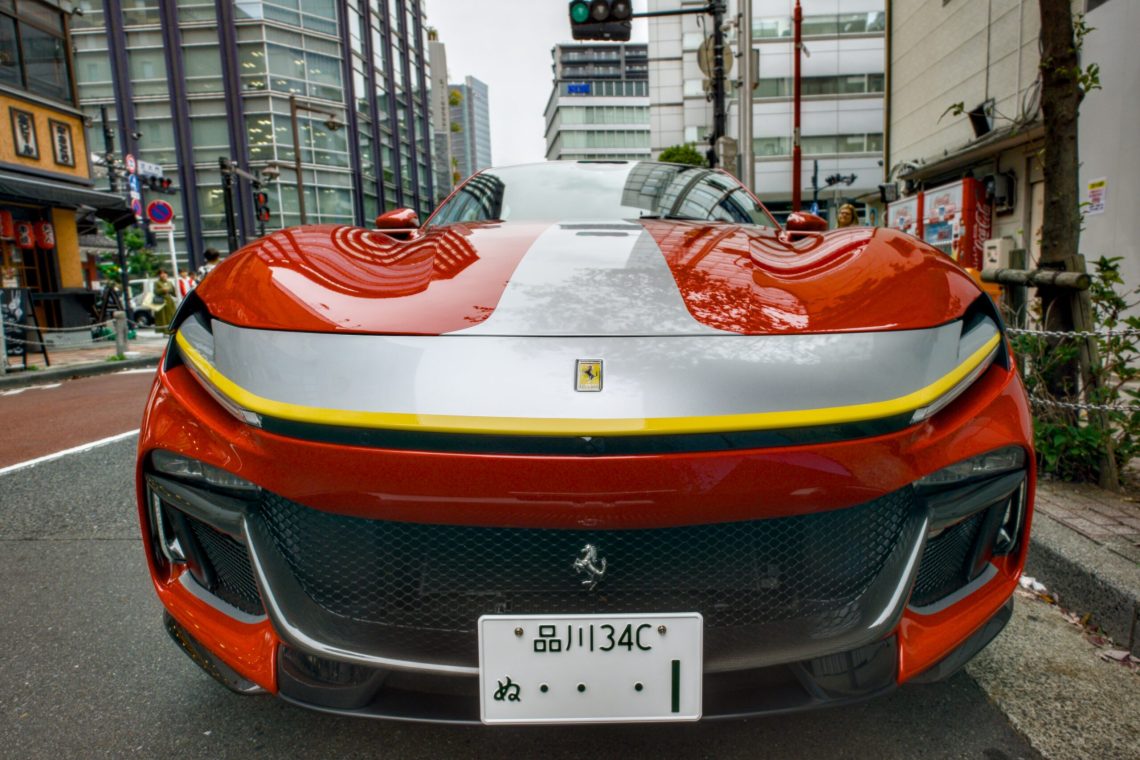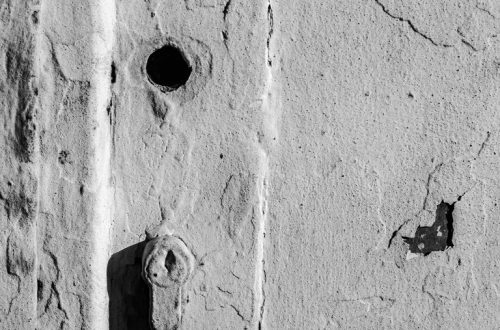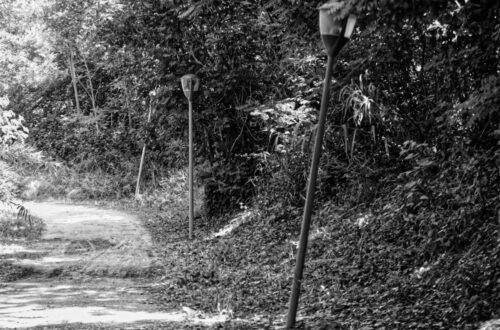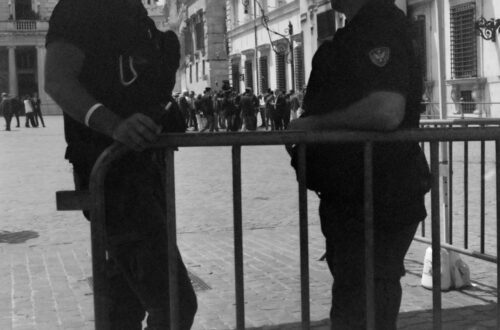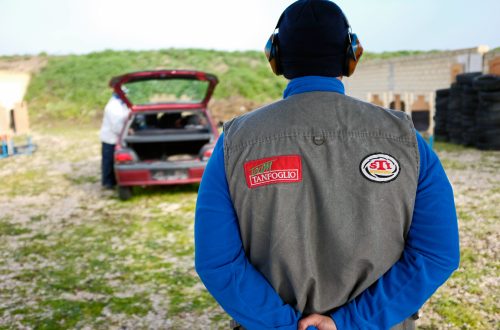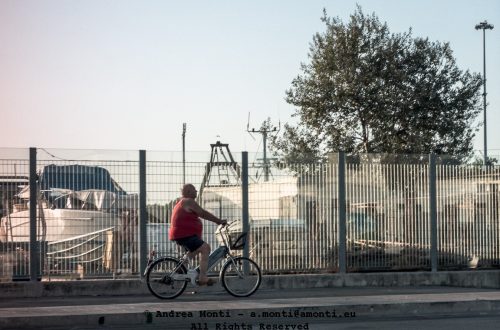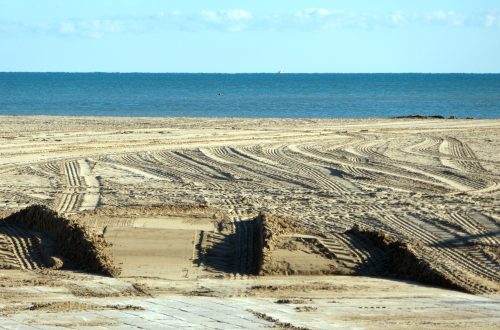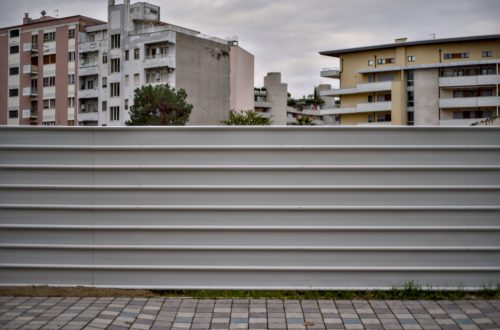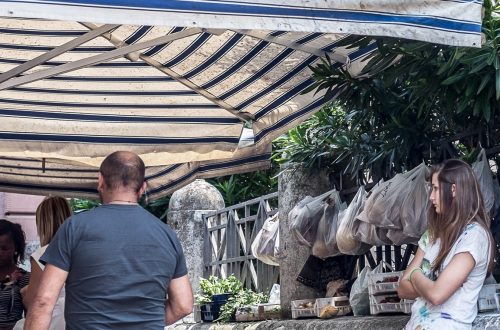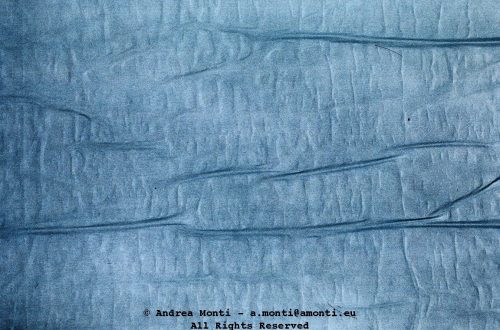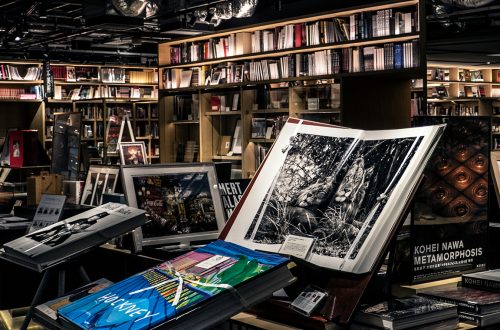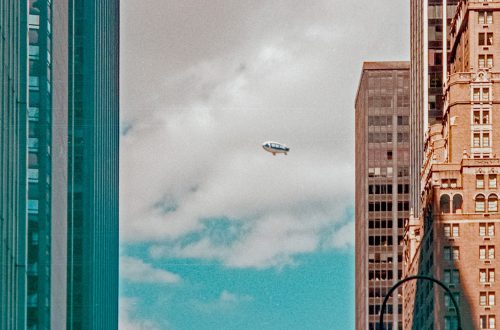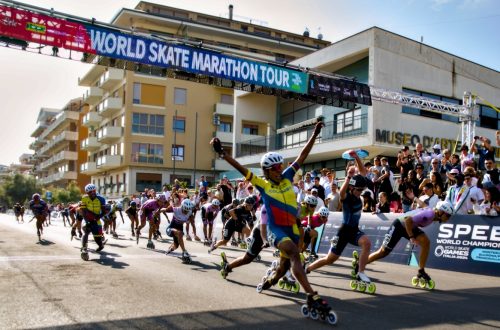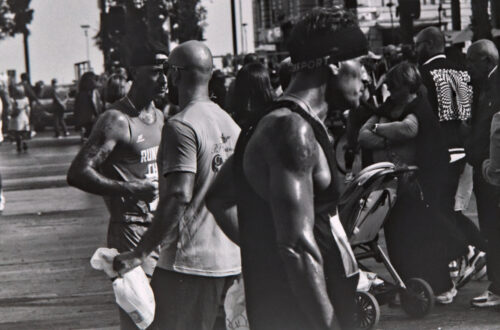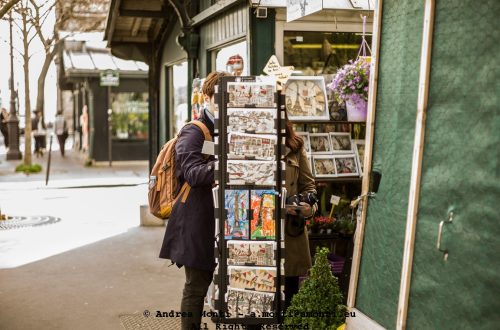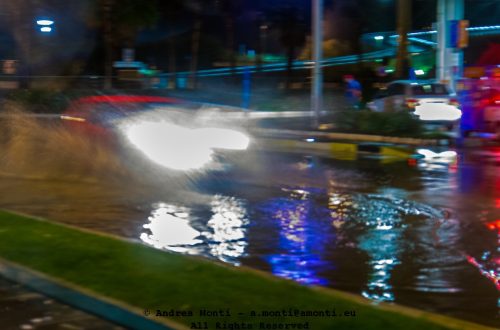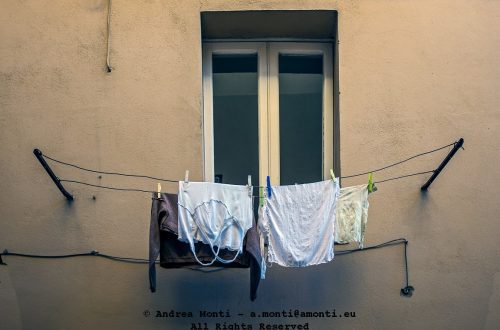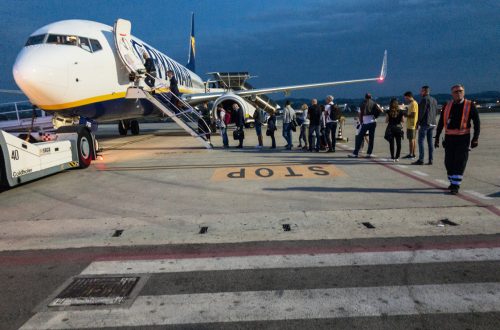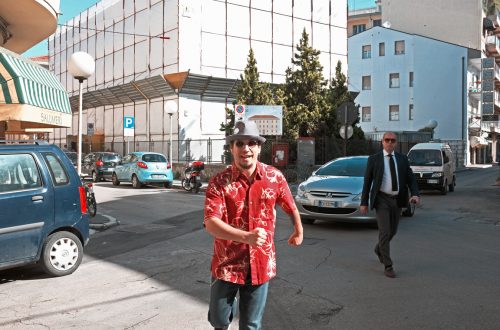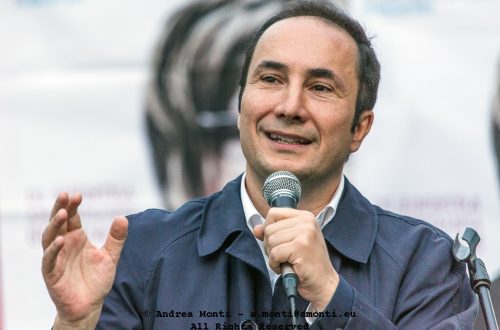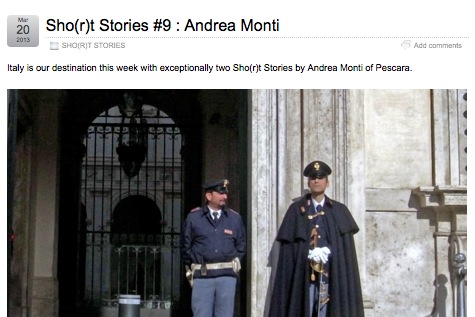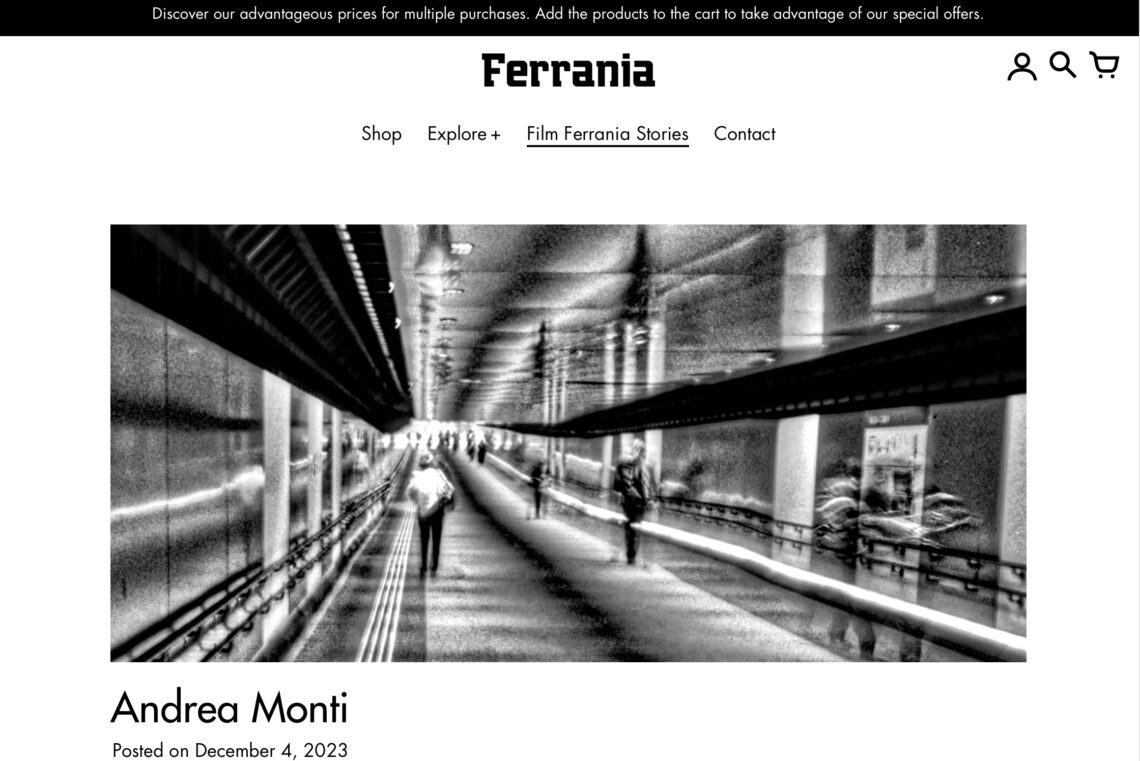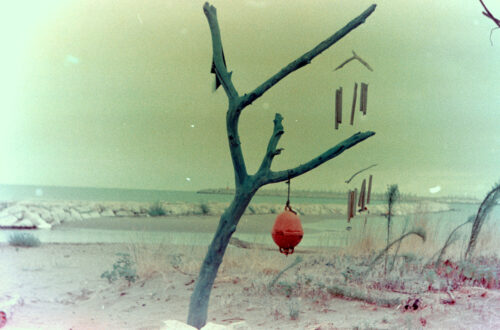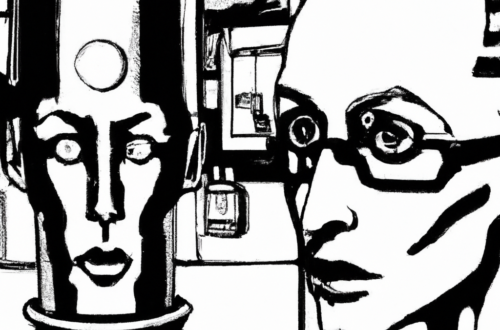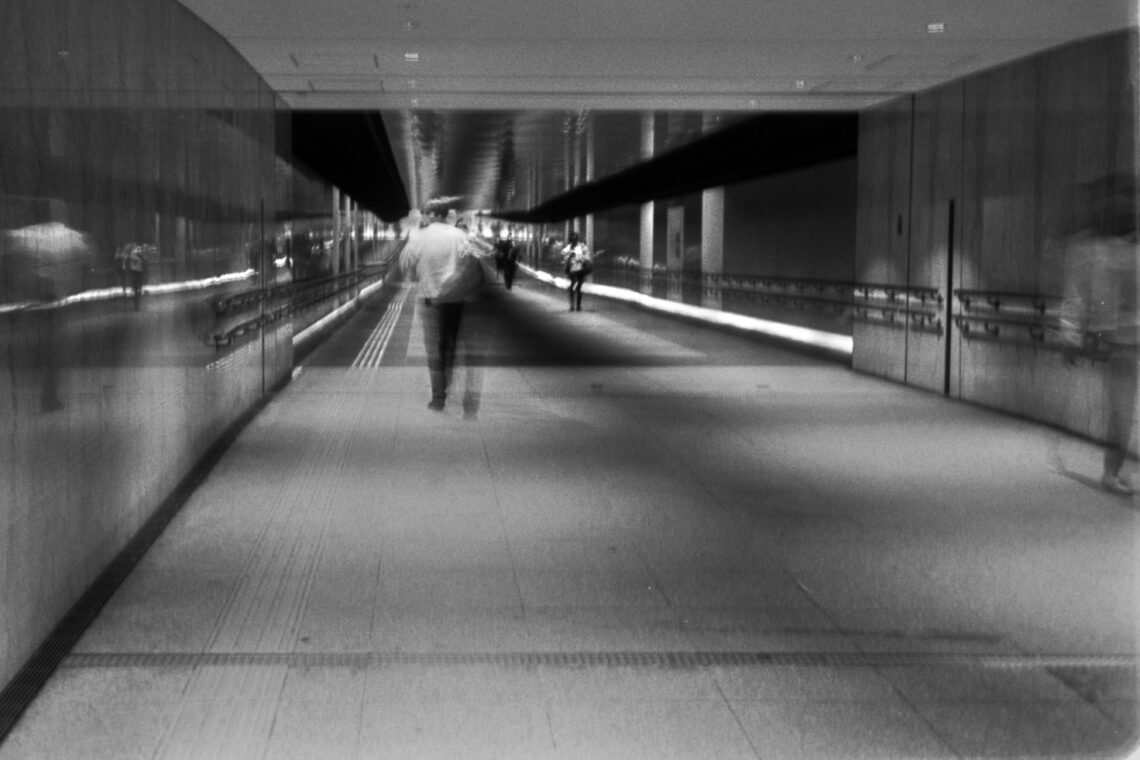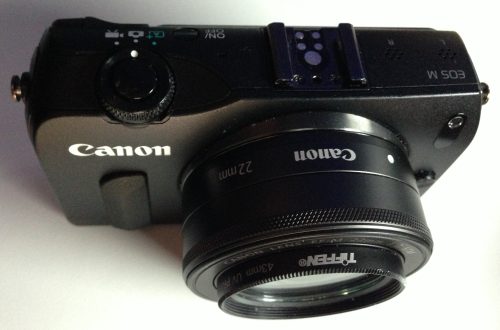-
Portraits From Nagoro, the Scarecrows’ Village
In the heart of Iya Valley, in Tokushima Prefeture, lies Nagoro, the Scarecrow Village. Half a ghost-town, half a still inhabited place, Nagoro’s main population is composed by about 300 scarecrows spread all around the village.
-
Three-Card Monte in Rome
Every now and then, Three-Card Monte scammers appear in unexpected places such as the narrow cobblestone streets between the Parliament and the Pantheon, in the centre of Rome. This was a textbook execution. The game was fast-paced. Hooks pretended to be casual passers-by and traded 50-euro banknotes as if they were Monopoly money, hoping to lure victims into bidding. A muscle was monitoring the scene, ready to intervene at the first sign of trouble. I tried posing as a casual observer, but there was a high risk of being spotted and confronted by the unfriendly lad at my left, so I was unable to set up a properly composed shot…
-
Bad Luck at Heian Jingu Shrine
As it is customary in Japanese Shinto shrines, also the Heian Jingu in Kyoto has an area where bad luck is left hanging in the open. 御御籤 —o-mikuji—are small strips of paper that people can choose at random to find out their fortune. As every tourist is told, the general rule is that you should keep the good omens and leave the bad ones hanging on a pine tree or a scaffold. The o-mikuji can be taken for free, however it is also customary to leave a 100-yen coin in return. In fact, this is one way in which shrines are able to sustain themselves, given that there is no…
-
An Asian Lion Guarding an Italian Town – One Shot Story
Ofena is a small town located within the Abruzzo National Park of Gran Sasso and Monti della Laga, in Italy, Hit by the 2009 earthquake, Ofena is still struggling to recover. Life came back to its ordinary pulse thank to the inhabitants who showed strong resilience. However, wandering around these wounded places I didn’t feel inclined to take photos as I felt like I was exploiting the enduring consequences of the tragedy that hit this community.
-
What Souvenirs Say About Rome (and Your Attitude Toward Life)
Rome’s souvenir shops are full of busts, plaques and other artefacts mixing the sacre and the profane —and sometimes even things that have nothing to do with the Eternal City. This make it challenging for a tourist to actually understand what he is looking at —and googling for information is not a common practice among that kind of visitors who, as Aldous Huxely brilliantly pointed out, travel without knowing exactly why they are visiting a certain place or another. Nevertheless, these souvenir displays offer an insight into some of the most fascinating aspects of Rome’s culture and history – Initially published on 35mmc.com. On the top shelf, a plaque shows Latin…
-
On Film Simulation or ‘is fiction more real than reality, and why should we care?’
Simulations have turned an inevitable fact —using the chosen brand and type of film for an entire roll— into an aesthetic tool allowing the selection of the most appropriate image rendition for each single exposure. Using simulations is like having all the different kinds of film in the same roll with all the convenience of digital technology, opening a huge number of creative possibilities. Initially published on 35mmc.com This is what the standard marketing claims for software simulations are based upon, but is that actually so? As a matter of fact, the answer is yes, but if we look at the matter from a different perspective, we should consider some…
-
Some odd outcomes from a photo recovering attempt using an AI
I was curious to see how an AI would handle a bad photo, so I uploaded this black-and-white shot taken in the area around Kyoto Station with my Nikon 35TI. Initially published on 35mmc.com. The photo itself —the one published as featured image— it’s part of a long term project to show the presence of Alfa Romeo (a brand I’m a big fan of) in the Japanese streets. It isn’t anything special, but I needed a starting point (the worse, the better) so, after having uploaded this poor shot, I prompted the software like this: As a professional in photo restoration and post production restore this photograph of an Alfa…
-
On Detachment. Or ‘If You Love Something, Set It Free’ (cit. Sting)
A number of philosophies and religions preach the virtue of detachment from things as a path to enlightenment. When applied to gear, this advice won’t only save your soul —if you believe there’s one— but also your money and, last but not least, your photograph experience. This means avoiding the development of ‘feelings’ towards a camera or a lens that shift from appreciating their value as a tool to some sort of ‘personal engagement’. Initially published on 35mmc.com As odd as it sounds, such an attitude towards an inanimate object is more frequent than one may imagine. A paradigmatic case is the attachment of AIBO’s owners to their robotic pets:…
-
One Shot Story – Soulless Places
Official brand stores are a powerful way to assert a company’s presence. They are a bold statement of strength and confidence. They send a message to the customers and to those who aren’t yet: look! whenever you go we’re there for you(r wallett). Admittedly, when travelling abroad it is sometimes reassuring to find a ‘familiar’ place – a cafeteria, a fast food, an electronic gadget shop – where everything works ‘as it should’. On the other hand, though, this strength has a serious downfall. Where was this picture taken? Of course, you may guess the location from a few clues (for instance, it was likely taken in a small Italian…
-
Sting of the Vespa
Vespa, in Italian, is not only the name of the stingy and frightening wasp. The word also identifies one of the world’s most famous examples of industrial design, dating back to 1946, and made internationally famous by the 1953 Hollywood motion picture Roman Holiday, starring Audrey Hepburn and Gregory Peck. Initially published on 35mmc.com The creator of this iconic scooter — an example of a perfect blend of ingenuity, style and appeal — was Corradino D’Ascanio. An aeronautical engineer from my home region, Abruzzo, he also designed and built the first helicopter, whose first test flight took place in the city of Pescara, a town near Popoli, a small village in…
-
5 Frames with various cameras – Ferrari On The Road(s)
Sports car photography usually happens in specific settings such as motorshows, official events, race tracks etc., where lights, crowds, fences and limited access to restricted areas are an issue. Doing the same on the street, however, is no less challenging as things happen unpredictably and, unless taking photograph of parked vehicles, there is no time to compose – Initially published on 35mmc.com In this photograph of a Ferrari F8 Tributo, the framing makes the car the focal point, and even though the door on the left adds a bit of visual clutter, it doesn’t detract from the overall result. The following image illustrate the trade-offs of reacting in real time…
-
One Shot Story: (Un)Available Coin Lockers at Shin Osaka Station
コインロッカー, the coin-operated lockers, are fundamental to travel around Japan: this is the first lesson any first-timer to this Country should learn beforehand. – Initially publishd on 35mmc.com Almost ubiquitous, they are plentiful in train stations and airports and are a convenient way to get rid of your luggage for a few hours or days while you are on a stopover. Until a few years ago, finding an empty コインロッカー was not such a daunting task, even when there were large numbers of tourists. Now, however, things have changed for the worse. Recently, on my way to Tokyo from Kyushu, I did —as the automatic PA system of the Shinkansen likes…
-
Padua, a photographer’s goldmine
During a few hours off work, I recently had the chance to wander around Padua, one of the many historical jewels that make up Italy’s immense cultural heritage. What makes Padua special is its devotion to a powerful icon of Christianity, Sant’ Antonio. A Portuguese by birth, Sant’ Antonio belonged to the Franciscan Order and gave birth to a religious movement whose importance is testified by the basilica that still bears his name – Initially published on 35mmc.com. For the photographer, Padua is a goldmine, not only for its architectural masterpieces, but also for the many less obvious and nonetheless interesting details. For example, here is a close-up of an antique…
-
The Stupidity of Being Stubborn
I knew exactly that I was going to fail, but I did it anyway, irrationally thinking that for some not well clear reason the law of physics and optics could be defied by the sacred mission of the photographer. Thus, contrary to basic common sense, a few weeks ago I brought a Nikon 35TI loaded with a Ferrania P33 (ISO160) to a jazz manouche concert of the Tchavolo Schmitt trio at the French Embassy in Rome. The outcomes, as it was easy to predict, were just (euphemistically) poor – Initially published on 335mmc.com Let’s start with a test shot to ascertain if there was some issue with the hardware: Apart…
-
Shooting Historical European Martial Arts (HEMA)-like Events
Historical reenactments are everywhere, and the volunteers who keep alive the memory of our past deserve our highest praise. Along with pure re-enactments, where the fate of the participants is already predetermined by history, and HEMA, where athletes compete using European weaponry and armour, there is a middle-ground discipline that is gaining momentum in Italy: Sport Reenactment – Initially published by 35mmc.com In short, SR players take part in reenactment events wearing faithful replica of the coats and arms of ancient Italian, Greek, Celtic and German tribes. But they also meet in forests and mountains to fight following a ruleset but without knowing in advance who is going to win. The…
-
The Ferrania Film Series – Episode 1 – Ferrania Orto shot on October/November 2023
This is the first episode in a series documenting the use of Ferrania film in various contexts. Episode 1 features a Ferrania Orto shot with a Nikon 35 TI in Japan, between 25 October and 1 November 2023.
-
Yet Another WDISF Post
Yes, this is another ‘why do I shoot film’ post, and no, the answers are not ‘because it slows me down’, ‘because it connects me to the act of taking pictures’, ‘because I love the unique feeling of analogue images’, ‘because the inherent limitations of a film camera inspire creativity’, ‘why not?’ or any of the other common (and perfectly legitimate) reasons usually associated with the question. In addition, the wide range of post-processing options available to make a digital image look like an analogue one, even in terms of film emulsion, satisfies the need to produce an image with the ‘personality’ of a specific film. So, even the idea…
-
Creativity vs Originality
Is the photo above creative? Is it original? Well… yes and no. It is certainly original because I ‘in person’ took it, and it is creative because – regardless of the aesthetic result – I took the time to arrange all the elements (composition, light, etc.) in a coherent moment —and I have the film negative to prove it. On the other hand, it is neither original —as in ‘unique’— nor creative because the same photo can be found here and maybe elsewhere on the Internet. Obviously, the linked photo it is not ‘the’ same as mine, because it is clear that they were taken at different times and places (mine was…
-
5 (improbable) Frames with a roll of Ferrania Orto and a Nikon 35TI
The photographer is a peculiar type of social being, characterised by a ‘rules are meant to be broken’ attitude in the search for the perfect exposure. So, sooner or later, all the dogmas about composition, hyperfocal, zone system, rule of thirds, etc. will be put aside to try something ‘different’. This is what happened with these five images, taken at night in Piazza Venezia and Via Salaria in Rome with a Ferrania Orto on a Nikon 35TI; a rather strange choice given the inherent limitations of an orthocromatic film and a 2,8 35mm lens of a compact camera in this scenario. Against all odds the 35TI performed well (especially in…
-
Iphone 15 Billboard in Via XX Settembre
This is an attempt to exploit the limitations of an orthocromatic film. Shadows and highlights were deliberately pushed, as was the contrast. This isn’t about the billboard. Not really. Yes, there’s a giant child smiling over Rome, her face stretched across several metres of vinyl, captured “with an iPhone 15,” if we’re to believe the tagline. She’s luminous, playful, part of a campaign you’ve probably already seen before you’ve even looked at it. But the photograph is something else. This was shot on orthocromatic film—intentionally. Shadows are carved in deeper than they should be. Highlights flare and collapse detail. The tonal scale isn’t flattering, and it isn’t faithful. It’s limited.…
-
Nagasaki Biker
Sometimes carrying a camera with a slow autofocus, slow shutter and low ISO can be a hindrance. Had I had a better camera and a faster film, this photo would have been much better.However, it is the eye that is to blame, not the old Nikon 35TI. I realised too late that what I was looking at could have been an image and had to react within a few seconds. In those conditions, the camera did what it could, but if I had been aware of my surroundings, I would have been ready at the right moment. So I paid the price for my bad habit of relying on gear…
-
Different Stories
Taking ‘static’ pictures, such as those of buildings and other architectural structures, can be quite challenging, as it is easy to fall into obvious, already seen compositions that rob the shot of any individuality.One of the things that can make an otherwise dull image more interesting is the presence of some kind of action that blends in with the stillness of the environment.In this case, the woman on the phone is in exactly the same position as the model on the billboard. Only they are telling two different stories.
-
As Seen on Ferrania Film’ Stories section…
A selection of the pictures I took this year in Boston and Tokyo has been published on the official Film Ferrania website, in the ‘Stories’ section.
-
Ghosts of Ginza
Another shot from my last visit to Japan, taken with a Nikon 35TI and a Ferrania Orto in the corridors of the Ginza subway station, Tokyo.
